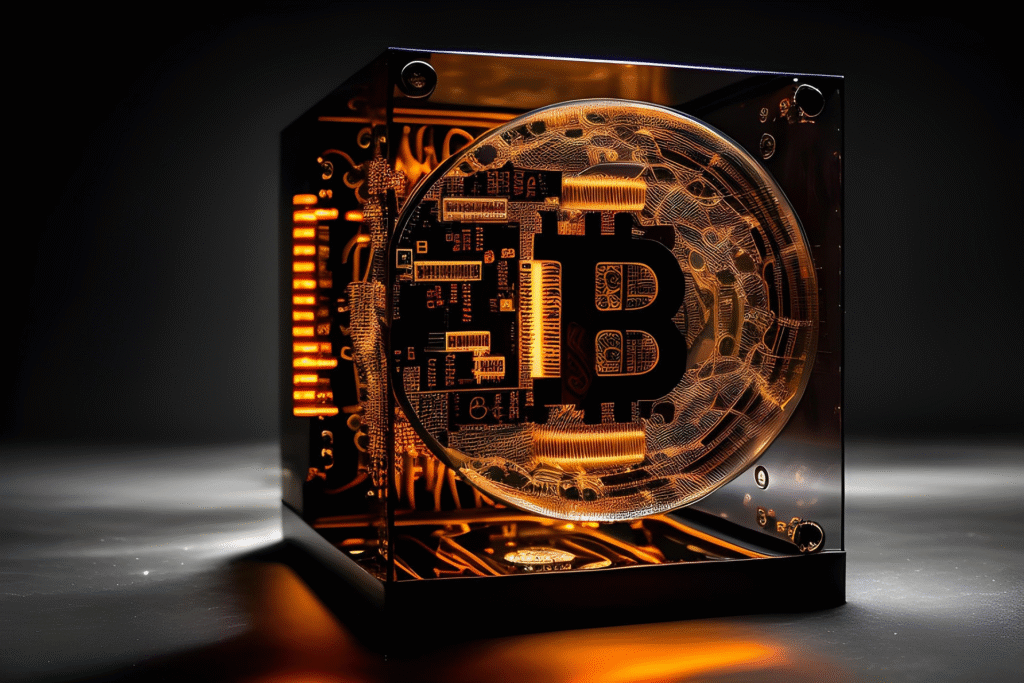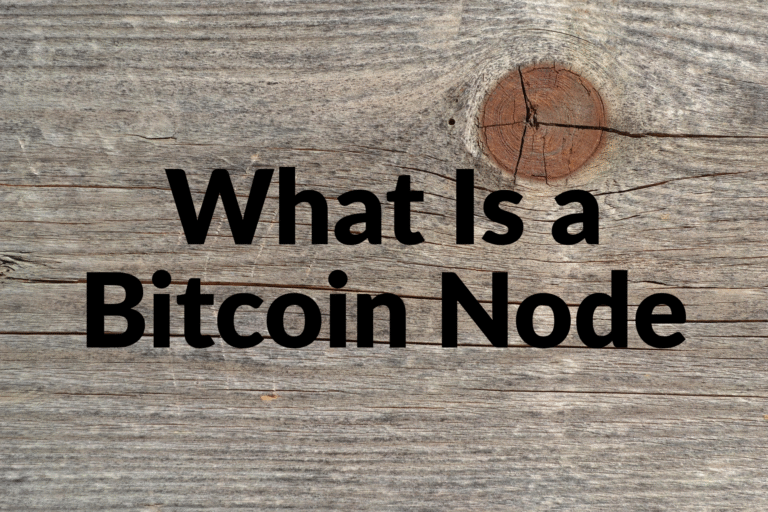
What Is a Bitcoin Node: The first decentralized digital money in history, Bitcoin, functions independently of a government, bank, or central authority. However, how is this feasible? A huge, international network of participants known as nodes has the solution. The unsung heroes that maintain the entire network safe, open, and decentralized are nodes, even though most people only think of miners and wallets when they think of Bitcoin.
The definition of a Bitcoin node, its operation, its significance, and the various kinds of nodes that underpin the Bitcoin network will all be covered in this article.
Understanding the Basics: What Is a Bitcoin Node?
What Is a Bitcoin Node: Fundamentally, a Bitcoin node is a computer that is a part of the Bitcoin network and communicates with other nodes using the Bitcoin protocol. Every node keeps a copy of the complete Bitcoin blockchain, confirms transactions, and assists in upholding the network’s regulations.
Consider the Bitcoin network as a community, with nodes serving as the people who assist maintain integrity and enforce the rules. The Bitcoin system would not work without nodes; it would be susceptible to fraud, double-spending, or complete failure.
The Role of Nodes in the Bitcoin Network.

Nodes perform several critical functions:
(1) Transaction Verification.
Every time someone sends or receives Bitcoin, that transaction is broadcast to the network. Nodes receive this transaction and check if it’s valid. They confirm:
- The sender has enough Bitcoin.
- The transaction is properly signed.
- It doesn’t violate any consensus rules.
- If a transaction is valid, it gets forwarded to other nodes. If not, it’s discarded.
(2) Block Validation.
When miners create new blocks (groups of transactions), nodes independently verify that the block is valid:
- Does it follow consensus rules?
- Are all transactions in the block legitimate?
- Is the proof-of-work hash correct?
If the block is valid, the node adds it to its copy of the blockchain. If not, it’s rejected.
(3) Maintaining Consensus.
What Is a Bitcoin Node: Bitcoin nodes decide which version of the blockchain is legitimate, which aids in maintaining consensus throughout the network. The true chain is recognized as the longest valid chain with the greatest amount of accumulated proof-of-work.
This decentralized agreement prevents any single entity from controlling the network or rewriting history.
(4) Broadcasting Information.
Nodes serve as the network’s relays. They notify their peers when they get legitimate blocks and transactions. This guarantees that everyone using the network has the most recent information.
Types of Bitcoin Nodes.
Not all nodes are the same. There are different types of nodes, depending on how they participate in the network:
(1) Full Node.
A full node downloads and stores the entire Bitcoin blockchain, which is over 500 GB in size (as of 2025). It verifies all transactions and blocks from the genesis block (the very first block) onward.
Full nodes:
- Enforce all of Bitcoin’s consensus rules.
- Reject invalid blocks and transactions.
- Relay valid data to other nodes.
- Running a full node is the best way to support the Bitcoin network and ensure its security. It also means you’re not relying on anyone else for information—you are your own authority.
(2) Lightweight Node (SPV Node).
SPV stands for Simplified Payment Verification. Lightweight nodes don’t download the full blockchain. Instead, they only download the block headers and rely on full nodes to get transaction information.
SPV nodes:
- Use less storage and bandwidth.
- Can verify transactions with a reasonable level of security.
- Are commonly used in mobile wallets.
- However, they trust full nodes for data and therefore aren’t as trustless or secure as full nodes.
(3) Pruned Node.
A pruned node is a type of full node that downloads the entire blockchain but deletes older data once it’s verified. This allows it to maintain the security of a full node while using significantly less disk space.
For example, a pruned node might only keep the last 5 GB of blockchain data.
(4) Mining Node.
A mining node is usually a full node connected to mining hardware. In addition to verifying transactions and blocks, it also creates new blocks by solving cryptographic puzzles (proof-of-work).
Miners compete to add new blocks to the blockchain and earn rewards in the form of Bitcoin and transaction fees.
Why Are Nodes So Important?
Without nodes, Bitcoin wouldn’t work. Here’s why they’re essential:
Decentralization.
Nodes are spread all over the world and operated by individuals, businesses, universities, and hobbyists. This decentralization ensures no single entity can control or censor the network.
Security.
Nodes independently verify every transaction and block, eliminating the need to trust third parties. This self-verification is a core principle of Bitcoin.
Resilience.
Even if some nodes go offline, the network continues to function. The more nodes there are, the more robust and fault-tolerant the system becomes.
Consensus Enforcement.
Nodes enforce Bitcoin’s rules, like the 21 million BTC supply limit. Even if miners tried to break the rules, honest nodes would reject their blocks.
Can Anyone Run a Bitcoin Node?
Yes! Running a node is open to anyone with a computer and an internet connection. Here’s what you need:
Minimum Requirements:
- A desktop or laptop computer (Raspberry Pi also works).
- At least 1 TB of free disk space (for full node).
- A reliable internet connection (with 150 GB/month bandwidth).
- Some basic technical knowledge.
- You can run a node using software like the reference implementation of the Bitcoin protocol.
Running a node doesn’t require mining or holding Bitcoin. You’re not earning rewards, but you’re supporting the network and gaining full sovereignty over your transactions.
How Many Bitcoin Nodes Are There?
As of 2025, there are over 15,000 publicly reachable Bitcoin nodes worldwide. However, many nodes operate behind firewalls or don’t advertise their IP addresses (called hidden or private nodes), so the total number is likely much higher.
These nodes are spread across continents, making the network resistant to regional shutdowns, censorship, or disasters.
Common Misconceptions.
Only miners are important.
Miners create blocks, but they don’t set the rules. Nodes enforce the rules and decide which blocks are accepted. In a way, full nodes are the true referees of the Bitcoin game.
Running a node is hard.
It used to be more technical, but modern tools like Umbrel, RaspiBlitz, and MyNode make running a Bitcoin node easy—even for non-technical users.
Conclusion.
A Bitcoin node is an essential component of the Bitcoin network and is more than just a computer running software. Nodes uphold the decentralized ledger, validate transactions, and enforce regulations, enabling Bitcoin to operate independently of any centralized authority.
Operating a Bitcoin node is one of the most empowering ways to get involved in the financial future, regardless of your background—developer, entrepreneur, or inquisitive person. By doing this, you support the decentralization, security, and well-being of the strongest financial system the world has ever seen.

